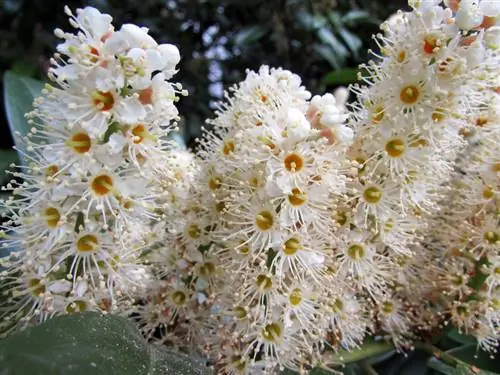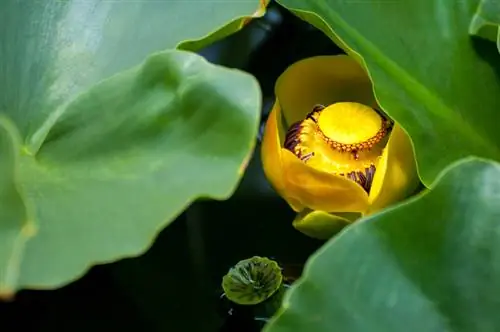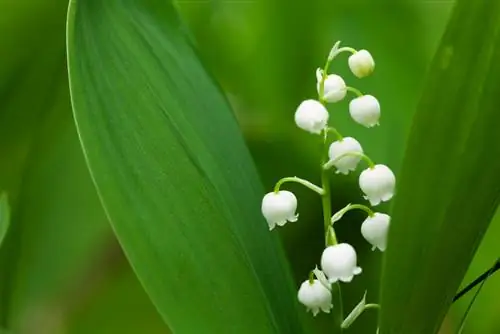- Author admin [email protected].
- Public 2023-12-16 16:46.
- Last modified 2025-01-23 11:20.
The cherry laurel can be found in many gardens as an evergreen hedge plant or attractive solitary shrub. The German name cherry laurel or laurel cherry refers to both the foliage of the tree and the cherry-like fruits.

What are the main characteristics of the cherry laurel?
The cherry laurel (Prunus laurocerasus) is an evergreen shrub from the rose family. It reaches a height of 0.5 to 7 meters, has white-yellow flowers and cherry-like, dark purple to black fruits. The cherry laurel is easy to care for, but poisonous and prefers nutrient-rich, well-drained soil and sunny to partially shaded locations.
Intended features:
The cherry laurel, Latin Prunus laurocerasus, belongs to the rose family and grows between two and seven meters high. From April to May, the shrub is adorned with flowers about one centimeter in size, arranged in alternate umbels. Some varieties bloom a second time in September. The fleshy, round stone fruits are initially green and turn dark purple to black by autumn. The foliage of the laurel cherry is smooth-edged, elongated oval in shape and shiny dark green; the leaf size varies depending on the variety.
Origin and distribution
The original homeland of the cherry laurel is in the temperate regions of the Caucasus and northern Iran. The shrub is found there at altitudes of up to 1,600 meters, and individual varieties even thrive at altitudes of up to 2.300 meters. In the wild, the laurel cherry prefers to colonize the soil regions of light deciduous forests as a forest plant and prefers shady or semi-shady locations.
The cherry laurel was introduced as an ornamental shrub in England as early as the 16th century and from here it spread to gardens and parks throughout Europe as a decorative and winter-hardy ornamental shrub thanks to new varieties.
The toxicity of cherry laurel
The cherry laurel is poisonous in all parts of the plant. If you rub the leaves between your fingers, you can smell a slight bitter almond aroma. The toxic glycosides are contained in both the leaves and the seeds, but the pulp is poison-free.
Botanical profile coming soon
- Name: Cherry laurel, bay cherry, Prunus laurocerasus
- Plant family: Rosaceae
- Species: Evergreen Shrub
- Growth height: Fifty centimeters to seven meters
- Growth width: Up to five meters and more
- Flowers: White or pale yellow with a light scent, umbels
- Fruits: Cherry-like, dark purple to black in color
- Location: Sunny to partially shaded
- Soil: Nutrient-rich and permeable
- Frost resistance: Very hardy depending on the variety
- Special features: Poisonous!
Tips & Tricks
Cherry laurel doesn't just look good as a hedge plant. The attractive shrub can also be easily cut into a ball or pyramid and then sets attractive accents in the garden.






